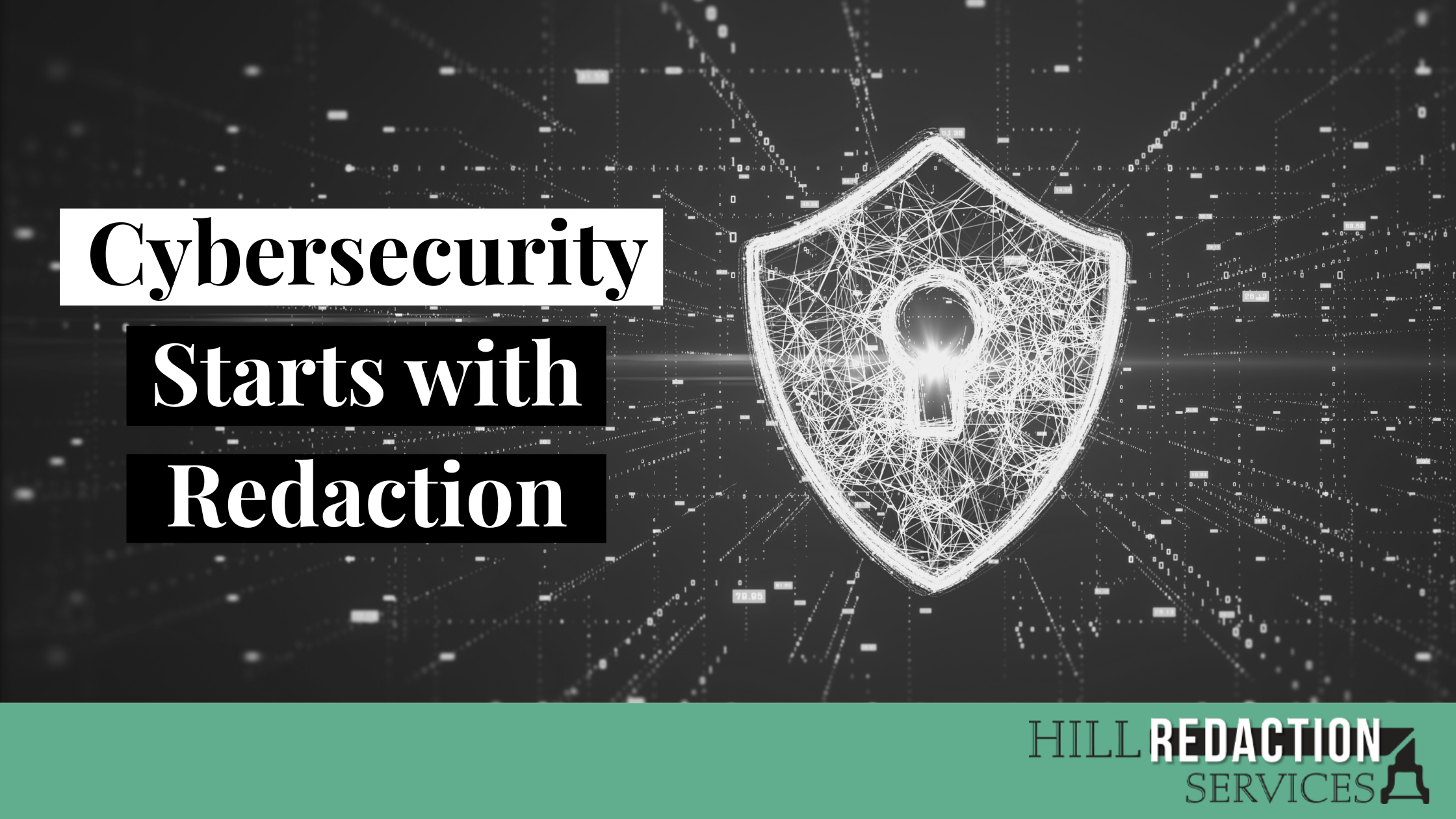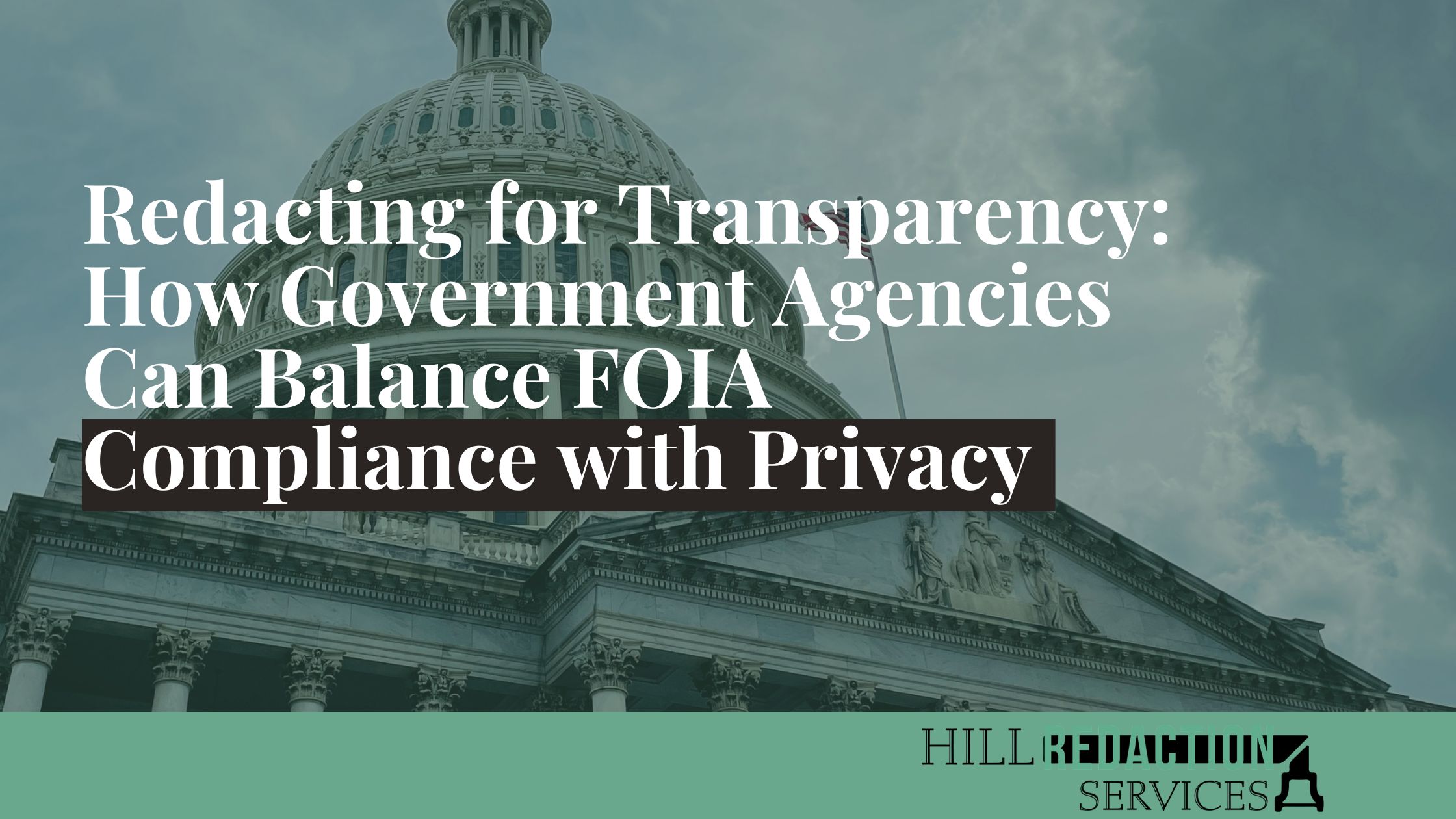
Redaction as a Tool for Fraud Prevention
Each November, International Fraud Awareness Week reminds organizations of a critical truth: fraud prevention starts with information control. While many teams focus on firewalls, passwords, and transaction monitoring, one powerful-but often underestimated-fraud defense tool is redaction.
Understanding the Link Between Redaction and Fraud
Fraud thrives on access to sensitive information. Names, Social Security numbers, account details, and internal notes can all be exploited to impersonate individuals or manipulate data. When documents are shared-internally, with third parties, or through public requests-every unredacted detail becomes an opportunity for misuse.
Proper redaction eliminates this risk by permanently removing sensitive data before it ever leaves your organization. Unlike visual masking (like black boxes or blurs), true redaction ensures the information is no longer recoverable-keeping personally identifiable information (PII) and financial details out of the wrong hands.
Common Fraud Risks Hidden in Everyday Documents
Fraud exposure doesn’t just come from stolen databases or phishing schemes. It often hides in plain sight:
- Email attachments containing editable or layered PDFs
- Mortgage or loan files with embedded financial data
- Legal documents showing privileged client details
- Government disclosures released under FOIA without complete redaction
- Clinical research data with patient identifiers left intact
Each of these document types is a potential entry point for fraudsters.
How Redaction Strengthens Your Fraud Prevention Strategy
To protect against fraud effectively, organizations must treat redaction as part of their information security and compliance framework-not an afterthought.
Here’s how redaction supports fraud prevention:
- Eliminates Data Exposure Before Transmission
Sensitive details are removed entirely, not just hidden or blurred. - Prevents Insider Threats
Redaction limits access to information internally, protecting against unauthorized use. - Maintains Regulatory Compliance
Ensures adherence to GLBA, HIPAA, FOIA, and CFPB guidelines—all of which mandate data protection. - Builds Public Trust
Clients, borrowers, and patients expect their data to remain private. Consistent redaction demonstrates accountability.
Best Practices for Fraud-Resistant Redaction
Implementing redaction correctly requires structure and consistency:
- Define what qualifies as sensitive information in your organization.
- Standardize redaction processes across departments to eliminate inconsistencies.
- Use professional tools that truly remove data, not just mask it visually.
- Train employees regularly to recognize redaction red flags (e.g., hidden layers, unflattened PDFs).
- Audit results periodically to confirm data has been fully sanitized.
The Bottom Line
Fraud prevention is no longer limited to IT departments or compliance teams-it’s an organization-wide responsibility.
Proper redaction closes one of the easiest doors fraudsters exploit: exposed, accessible data.
At Hill Redaction Services, we help organizations in government, mortgage servicing, clinical research, and legal sectors identify and eliminate sensitive data before it becomes a liability.
Effective redaction isn’t just about compliance-it’s about preventing fraud before it starts.
Related Posts

Redaction as a Tool for Fraud Prevention
Each November, International Fraud Awareness Week reminds organizations of a critical truth: fraud prevention starts with information control. While many teams focus on firewalls, passwords, and transaction monitoring, one powerful-but often underestimated-fraud defense tool is redaction.
Understanding the Link Between Redaction and Fraud
Fraud thrives on access to sensitive information. Names, Social Security numbers, account details, and internal notes can all be exploited to impersonate individuals or manipulate data. When documents are shared-internally, with third parties, or through public requests-every unredacted detail becomes an opportunity for misuse.
Proper redaction eliminates this risk by permanently removing sensitive data before it ever leaves your organization. Unlike visual masking (like black boxes or blurs), true redaction ensures the information is no longer recoverable-keeping personally identifiable information (PII) and financial details out of the wrong hands.
Common Fraud Risks Hidden in Everyday Documents
Fraud exposure doesn’t just come from stolen databases or phishing schemes. It often hides in plain sight:
- Email attachments containing editable or layered PDFs
- Mortgage or loan files with embedded financial data
- Legal documents showing privileged client details
- Government disclosures released under FOIA without complete redaction
- Clinical research data with patient identifiers left intact
Each of these document types is a potential entry point for fraudsters.
How Redaction Strengthens Your Fraud Prevention Strategy
To protect against fraud effectively, organizations must treat redaction as part of their information security and compliance framework-not an afterthought.
Here’s how redaction supports fraud prevention:
- Eliminates Data Exposure Before Transmission
Sensitive details are removed entirely, not just hidden or blurred. - Prevents Insider Threats
Redaction limits access to information internally, protecting against unauthorized use. - Maintains Regulatory Compliance
Ensures adherence to GLBA, HIPAA, FOIA, and CFPB guidelines—all of which mandate data protection. - Builds Public Trust
Clients, borrowers, and patients expect their data to remain private. Consistent redaction demonstrates accountability.
Best Practices for Fraud-Resistant Redaction
Implementing redaction correctly requires structure and consistency:
- Define what qualifies as sensitive information in your organization.
- Standardize redaction processes across departments to eliminate inconsistencies.
- Use professional tools that truly remove data, not just mask it visually.
- Train employees regularly to recognize redaction red flags (e.g., hidden layers, unflattened PDFs).
- Audit results periodically to confirm data has been fully sanitized.
The Bottom Line
Fraud prevention is no longer limited to IT departments or compliance teams-it’s an organization-wide responsibility.
Proper redaction closes one of the easiest doors fraudsters exploit: exposed, accessible data.
At Hill Redaction Services, we help organizations in government, mortgage servicing, clinical research, and legal sectors identify and eliminate sensitive data before it becomes a liability.
Effective redaction isn’t just about compliance-it’s about preventing fraud before it starts.






